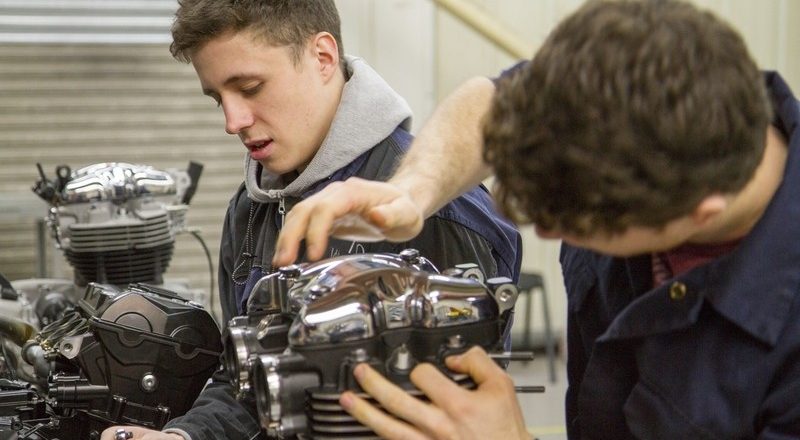
On a motorcycle technician apprenticeship course, you’ll help service and repair motorcycles, motorised scooters, all-terrain vehicles, tricycles and vehicles where the rider sits astride the frame.
A motorcycle technician works in the franchised or independent motorcycle sector, maintaining and repairing motorcycles, motorised scooters, all-terrain vehicles, tricycles, and vehicles where the rider sits astride the frame. You will be in charge of all of the motorcycle’s systems in this job.
The job entails repairing components to troubleshooting complex problems using specialised diagnostic processes and equipment. In addition, motorcycles must be set up and explicitly altered to match the demands of the rider, which may include recreational, commuting, commercial, and competitive use.
Today’s motorcycle technicians must be technically proficient in their field. They must be exceptional problem solvers with a solid grasp of motorcycle systems’ theoretical, practical, and safety components. They must work individually and as part of a team, and they must understand how their workshop and a motorcycle operate.
What you’ll learn
On a motorcycle technician apprenticeship course, you’ll learn to:
- Cut, drill, file, remove and replace bolts, screws, and clips, replace seals, extricate damaged fasteners, and do the fabrication.
- Assist in maintaining high levels of safety and efficiency in the workshop and adhering to the essential business processes and workshop standards (e.g., environmental awareness, health and safety measures, record keeping, and customer engagement).
- Secure motorcycles to ramps and use specialised support platforms to remove road wheels and other critical components, including brake systems, suspension, and drivetrain (chain, belt or drive shaft)
- Inspect and prepare a motorcycle for handover to the customer at the correct quality level, such as after a service, complex repair, or pre-delivery inspection, by assessing work against a checklist.
- Disassemble, repair, and replace components according to the manufacturer’s instructions.
- Use diagnostic techniques, mechanical and electrical measuring devices, and equipment to assure compliance and repair faults.
- Investigate the symptoms and uncover the underlying causes before fixing a motorcycle.
- Access specific data such as motorcycle repair manuals, wiring schematics, maintenance tables, technical production data, and safety recalls.
- Utilise advanced diagnostic concepts, logical problem-solving procedures, and complex problem-solving approaches.
Entry requirements
You’ll usually need:
- An interest in motorcycles, mechanical skills and communication skills.
- Apprentices without level 2 English and maths will need to achieve this level before taking the end-point assessment.
Assessment methods
The End Point Assessment consists of three distinct assessment methods:
- On–line Knowledge assessment
- Practical assessment
- Professional discussion (informed by Logbook)
Duration, level, subjects and potential salary upon completion
- Duration: 36 months
-
Level: 3 – Advanced Apprenticeship
- Relevant school subjects: DT and science
- Potential salary upon completion: £24,000 per annum
Apprenticeship standard
More information about the Level 3 Motorcycle Technician Apprenticeship standard can be found here.
Apprenticeship end point assessment
For more information about the End Point Assessment Process, please read the Institute of Apprenticeships’ information page.
